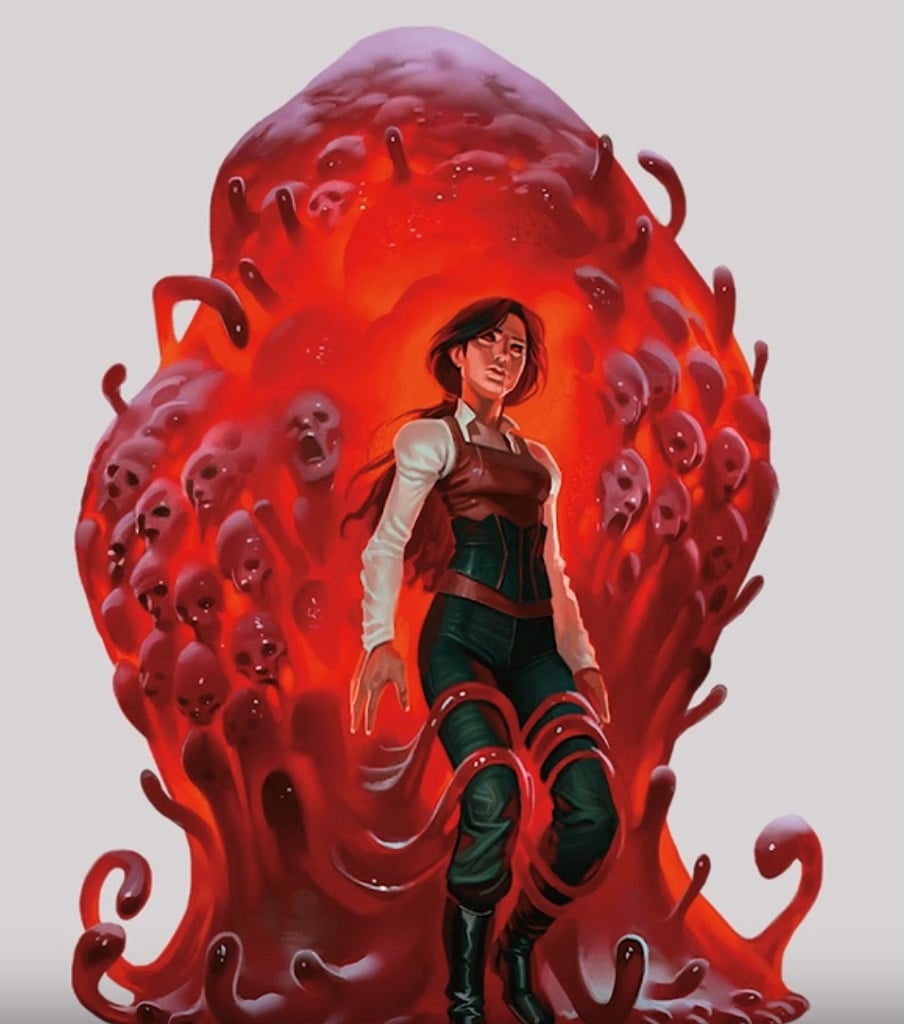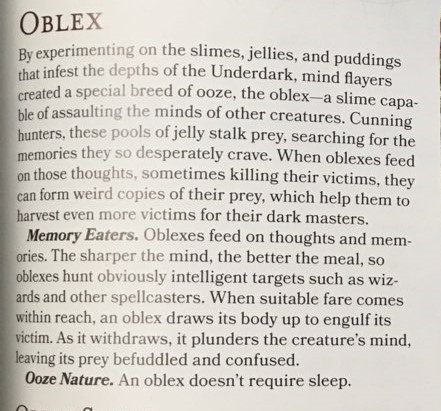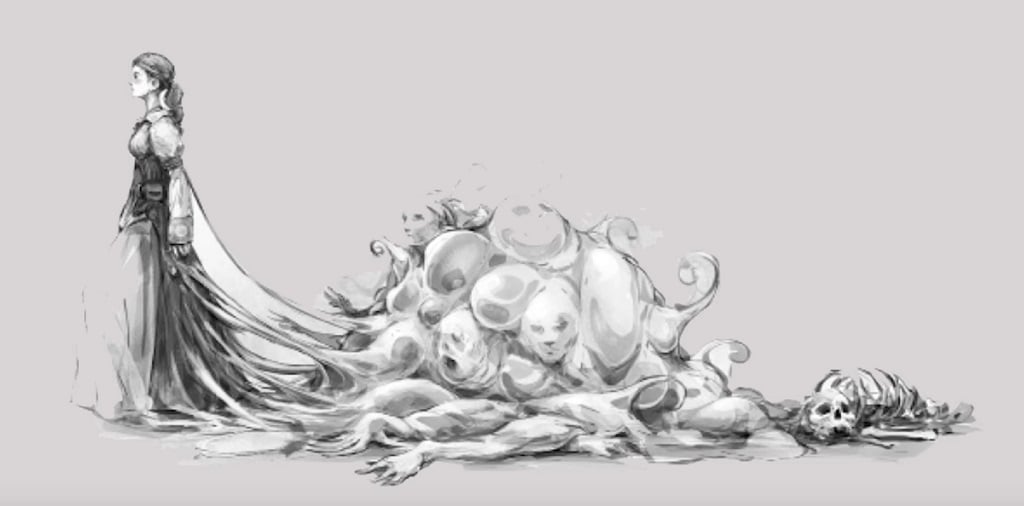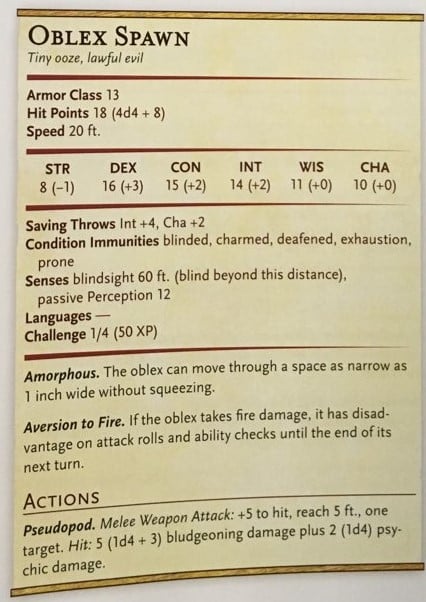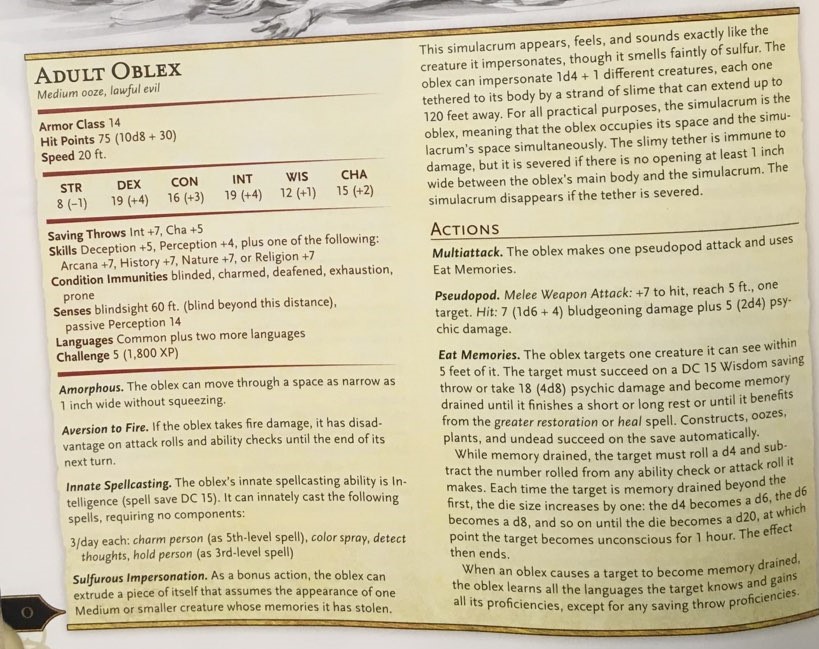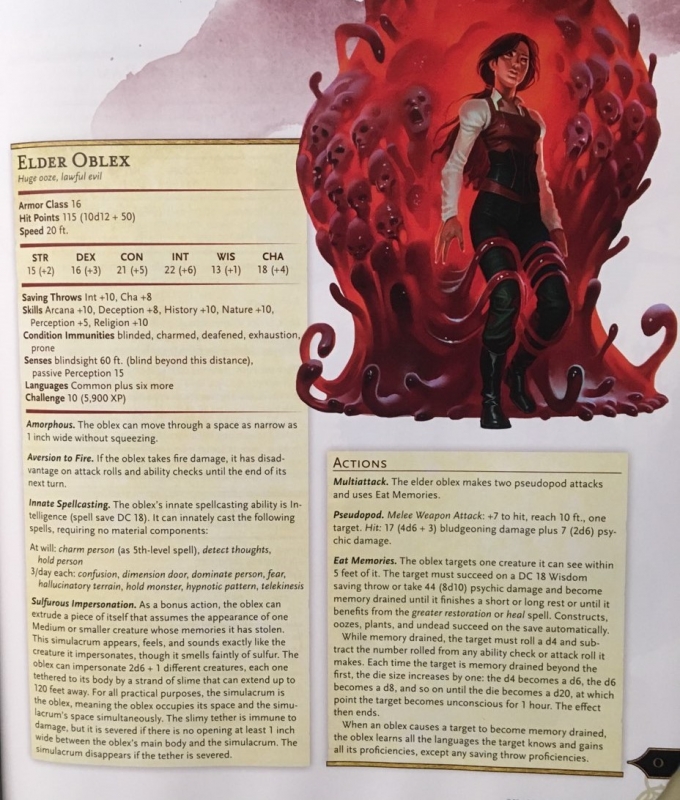D&D: The Touching Story Behind The Tome Of Foes’ Scariest Monster

The origins of the Oblex are surprisingly heartwarming for so horrifying a monster. Proof that even terrors engineered by Mind Flayers can cause feels.
Meet the Oblex. One of the monsters out of Mordenkainen’s Tome of Foes. They are terrifying oozes who’ve been experimented on by Mind Flayers, twisted and “blessed” with the ability to absorb the memories of people and even create psychically empowered duplicates from the people it’s absorbed.
And they’re also the result of the Make-A-Wish foundation, which thanks to their work, brought a young boy, Nolan Whale, who worked side by side with the D&D team for a day, concepting different things, including the Oblex.
It’s a lot like the early days of D&D, when folks would write in to Dragon Magazine with their monster ideas and they’d eventually get collected in the Fiend Folio.
And today you can find monsters and more designed by the community on the DM’s Guild–which just goes to prove that the imagination that drives the game is still going strong.
Speaking of imagination, let’s dive into what these monsters actually do. They come in three flavors, spawn, adult, and elder. First up there’s the Oblex Spawn who are the cast off personalities of Elder Oblexes that have absorbed too many personalities to contain.
Here we get the basic idea of what an Oblex is. With an amorphous body, blindsense, and an aversion to fire–this is the most basic ooze you can really get. None of the special memory abilities–but as the Oblex absorbs more and more you get a picture of the gibbering monster from the video.
And here we see the first iconic abilities–the innate spellcasting that enables it to detect thoughts and imprison prey. The Sulfurous Impersonation ability, though, is the real meat and potatoes of the monster. It’s an interesting rule, in that it allows the Oblex to create these duplicates and to have them within 120 ft of its central nexus, but as far as the rules are concerned, the duplicates are as much the Oblex as the Oblex is.
Which can make for some interesting situations–the Oblex can attack through a duplicate, using its pseudopod and eat memories, but it is also vulnerable through a duplicate. Effectively it can take damage from multiple areas while also threatening them. Being able to impersonate a creature makes these monsters well suited to surprise attacks. You think you’re talking to someone, then suddenly you’ve been hit with a memory drain or two and then you become a part of the ooze.
Elder Oblexes are much the same, though they have more spells that are psionic in nature, as well as more powerful pseudopod and eat memories.
For best results I’d run these with an escape in mind. They’re very intelligent, and one of the real advantages is their ability to move where players can’t. They don’t necessarily have to build their escape plan, but fighting in a room with small gaps or drains and it can escape.
For extra fun, think about the personalities of their victims and how they might play out. They’re mired within this all consuming eldritch ooze–but a particularly strong one might influence the Oblex. Imagine if it absorbed the memories and personalities of a particularly memorable NPC–friend or foe it could make for an interesting adventure. These are great to use after the PCs have left their imprint on the world; when they’ve done that, invariably the world has left its mark on them as well.
Happy adventuring!

